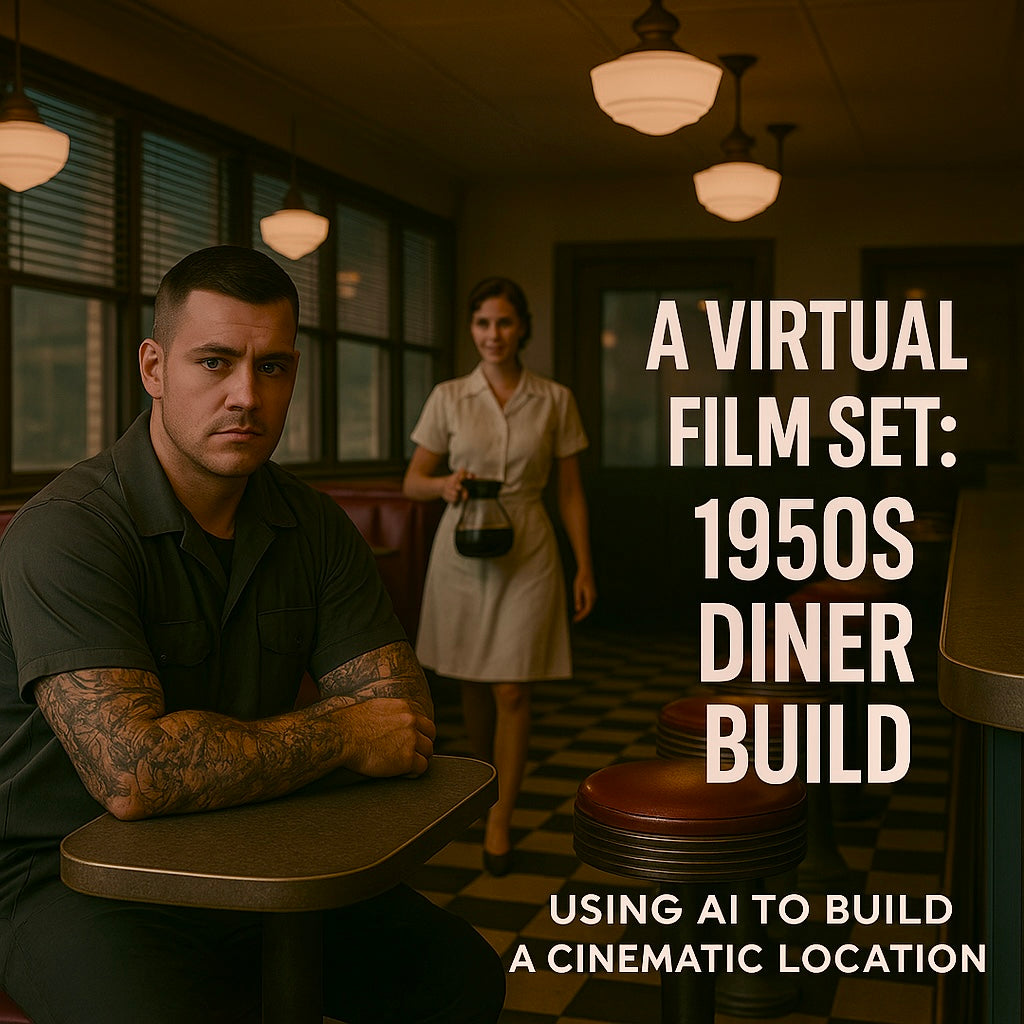
A Virtual 1950s Diner
Share
Building a 1950s Diner Set with AI
Ever wondered what it would be like to step onto the set of a 1950s American diner? In this post, I’m sharing how I used ChatGPT to create a diner set. Rather than generating a fully dressed scene with characters from the start, I took a different approach: build the set first, then populate it with AI-generated actors.
But before that, I actually wanted to create a car mechanic character inside his own workshop. 👇🏻
ChatGPT recently released an update that’s taken image generation to the next level — and it looks like creating consistent characters and environments is finally possible. So let’s see what Jen can do.
Image Prompt 1 👆🏻
Hi Jen, can you create for me a cinematic image of a man wearing mechanic's overalls. He has tattooed arms and a short haircut. He is situated in a workshop.
*Quick note: I’ve named my ChatGPT 'Jen' — short for Generative Image Creation. Makes the collaboration feel more personal than just saying 'ChatGPT.'

Image Prompt 2 👆🏻
Can you expand the background to make the image 16:9?

Now that GPT-4o allows for consistent character creation, I thought I’d try building a scene progressively.
Image Prompt 3 👆🏻
Create a cinematic image of a young woman who is acting as the client of the mechanic, coming to check out the work on her car. Set her in the same workshop with the same lighting and background props. Exclude the mechanic for now.

Image Prompt 4 👆🏻
Can you now combine both Character 1 (Male mechanic) and Character 2 (Female client) in the same scene? Maintain their facial features, height, hair, skin tone, etc., as well as his tattoos. Character 1 should be on the left looking at Character 2 on the right. The shot should be a medium wide shot.

The On-Set Project
As a filmmaker and visual storyteller, I wanted to see how accurately I could build a cinematic space using AI — starting with an empty set and gradually building it up shot by shot.
Building the Diner
The first step was to generate a clean, unpopulated version of the space. I designed a layout featuring:
- Classic red vinyl booths
- Checkered black and white flooring
- A teal bar area with metal stools
- Warm pendant lighting, accurate to the era
Set Geography
We then mapped out the space visually and architecturally. Here's what was created:
- Main View — Looking down the length of the diner, showing the booths and bar
- Reverse Angle — Facing the windows and booths from the other direction
- Front Door Shot — Looking toward the entrance with natural light streaming in
- Floor Plan — A top-down sketch of the layout
- Wide Master Shot — Capturing everything from one corner of the room
Populating the Set
Once the space felt believable, I introduced characters:
- A tattooed mechanic sitting at the bar
- A female customer in a booth
- A waitress behind the counter serving coffee
Lighting Variants
To finish, we explored different lighting moods — transforming the space from day to night while keeping all visual elements consistent.
Conclusion
This project showed that with thoughtful planning and prompt writing, AI-generated sets can be remarkably cinematic and consistent. There’s still room to grow — but this diner is open for storytelling.



